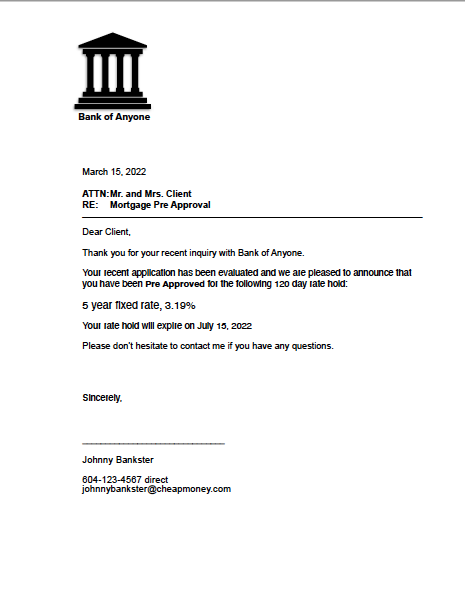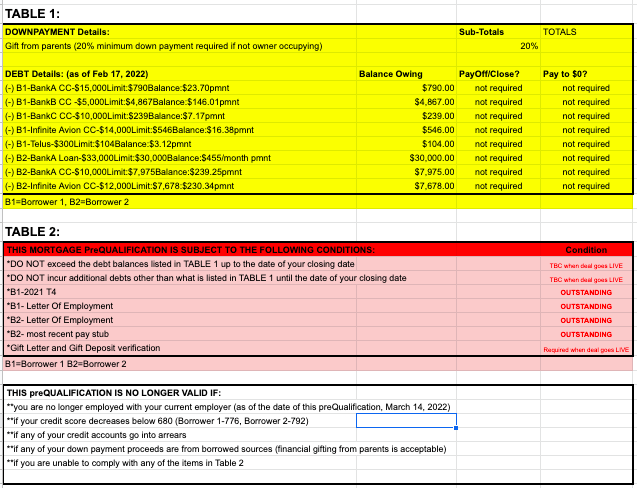(January 12, 2023)
Here are 5 key points to be aware of when qualifying for a mortgage for the purpose of purchasing a rental/investment property:
- Keep your day job. Your personal income is still one of the most impactful parts of your mortgage application. If you are self-employed, you will need an established tenure of at least two years and your declared income will have to be adequate enough to service the mortgage (after all applicable rental income offsets are applied). Many of the (so called) self employed programs in the market are ineligible when it comes to purchasing investment/rental properties. Unless you declare a very high self employed income (Line 150 of your Notice of Assessment), salaried/hourly jobs are typically a more favourable income type for qualification purposes.
- If you own additional properties with mortgages, consider maximizing the amortization periods. This could significantly reduce the overall debt servicing ratio of your application, thereby enhancing your chances of qualifying for an additional property (or even multiple properties).
- Lenders do not accept short term rental income (i.e. property share platform/sites) for qualification purposes. Instead, they use long term market rentals/leases. If you have not yet secured a tenant for your rental property, the lender will request a market rent evaluation from an appraiser which will be used as qualifying rental income. For example, if you are able to generate $7,000 per month in short term rental vacancies, but the going rate to lease your property is $2,500/month, it is the $2,500 that will be used for qualification purposes, not the $7,000.
- Once the qualifying rental income has been determined, it is then applied to the rental income formula of the selected lender. The amount of the rental income that is eligible for qualification purposes varies significantly from lender to lender. Lenders will allow you to use anywhere from 50% to as high as 80% of the rental income as eligible qualifying income. Furthermore, depending on the lender, the eligible income is either added to the overall qualifying income of the application, or it is applied as an offset against the overall liabilities of your application. The more impactful of the two is when a lender applies the rental income as an offset against the overall liabilities of your application. In some cases, an applicant will opt for the higher interest rate lender simply because they incorporate the liability offset method to their adjudication process rather than the far less impactful add-to-overall-income method
- Select the product, term and amortization of your rental property mortgage. Do so with the mindset of setting up financing for a small business. This is a critical decision as it cements your highest fixed expense cost – your mortgage payment. Analyze the different terms, rates, and amortizations and determine which is most suitable for you. This is where you can firm up your cost and expense ratio and determine the outcome of your monthly cash flow. Will you have a positive cash flow where your rental income exceeds your mortgage payment and other peripheral expenses (i.e. property tax, maintenance, contingency, etc)? Or will you have a negative cash flow where your mortgage payment and peripheral expenses exceed your rental income? Or perhaps it might be something in between? Whatever the case may be, most success stories adhere to one main principle to drive their decision making process – Remove emotion from the equation and let mathematics drive your next move. If the math doesn’t add up, don’t do it.
Interested in purchasing your first rental property, or expanding upon your current rental portfolio? Call or text Marko Gelo right now at 604-800-9593.
RECENT ARTICLES:
Can I use Part-Time income to qualify for a mortgage?
How to reduce your mortgage payment in a rising interest rate environment?
Contact Marko, he’s a Mortgage Broker!
604-800-9593 cell/text/WhatsApp | Vancouver (Click Here to schedule a call with Marko!)
403-606-3751 cell only | Calgary (Click Here to schedule a call with Marko!)
Email Me: gelo.m@mortgagecentre.com
@markogelo (Twitter)





